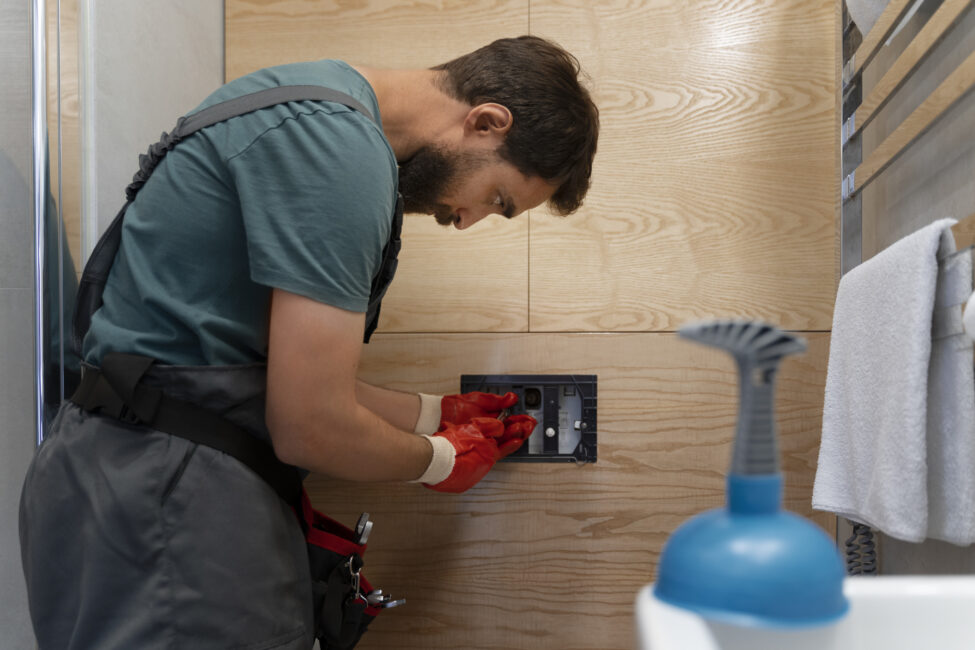Moisture can be a silent yet formidable adversary in the battle to maintain a safe and functional business environment. From structural deterioration to potential health hazards, the effects of damaging moisture on business premises can be far-reaching. In this comprehensive guide, we will explore the causes, assessment, prevention, and removal of moisture, as well as the steps to restore and safeguard your business premises against its damaging effects.
Understanding the Causes of Moisture
Understanding the root causes of moisture-related issues is pivotal in implementing effective prevention and management strategies. Common sources of excess moisture in commercial and residential settings include leaks in plumbing systems, inadequate ventilation, high humidity levels, and water intrusion from external sources such as rainfall or flooding. Property owners and facility managers can proactively address vulnerabilities and deploy targeted solutions to mitigate the risks associated with moisture accumulation by conducting a comprehensive assessment of these potential triggers. Additionally, factors like building materials, geographical location, and seasonal variations play key roles in influencing moisture levels, underscoring the need for a nuanced understanding of local environmental dynamics to manage moisture-related challenges effectively.
Furthermore, the impact of human activities, such as cooking, bathing, and industrial processes, cannot be overlooked in contributing to indoor humidity and moisture accumulation. Educating occupants and employees on best moisture control practices and promoting appropriate ventilation systems can significantly aid in reducing the likelihood of moisture-related issues. By fostering awareness and implementing proactive measures to mitigate the impact of both natural and anthropogenic factors, property stakeholders can create a conducive, sustainable environment that prioritizes the overall well-being of occupants while safeguarding the integrity of the built infrastructure.
Assessing the Damage
Assessing the extent of damage, whether due to environmental factors or unforeseen incidents, is a crucial aspect of property management and maintenance. This process involves a comprehensive evaluation to determine the impact on structural integrity, safety, and overall functionality. Effective damage assessment lays the foundation for informed decision-making and facilitates the planning of necessary remedial actions to restore the affected area. It also provides valuable insights into the scope of repairs or replacements required, guiding property owners and managers in allocating resources efficiently while minimizing disruptions.
Moreover, leveraging advanced technologies such as drones, thermal imaging, and moisture meters enhances the precision and thoroughness of damage assessments. These tools enable professionals to gather accurate data, identify hidden issues, and create detailed reports that form the basis for effective mitigation strategies. By embracing modern assessment methodologies, property stakeholders can streamline the evaluation process, expedite recovery efforts, and ultimately ensure the restoration of a safe, habitable environment for occupants.
Removing Existing Moisture
In the realm of commercial and industrial spaces, the issue of removing existing moisture is a critical concern, especially in the context of preventing water damage, ensuring a safe working environment, and preserving valuable assets. The availability of commercial dehumidifier rentals presents a practical and efficient solution to this challenge. These rentals offer businesses the flexibility to access high-capacity dehumidification equipment tailored to their specific needs, whether it’s for post-flooding restoration, moisture control during construction projects, or ongoing climate management. With offerings ranging from 325 to 15,000 CFM, businesses can select the appropriate dehumidifier capacity to effectively combat excess moisture and maintain optimal humidity levels within their facilities. The ability to rent commercial dehumidifiers allows businesses to address moisture-related issues promptly, providing a proactive approach to safeguarding their physical infrastructure and mitigating the risks associated with moisture damage.
Furthermore, the diverse range of industrial dehumidifier rental options available from reputable providers empowers businesses with the capability to deploy specialized dehumidification solutions suited to their unique requirements. These offerings encompass desiccant and refrigerant dehumidifiers designed to cater to various industrial applications, ensuring that businesses can access cutting-edge technology for moisture removal, climate control, and asset protection. By leveraging industrial and commercial dehumidifier rentals, businesses can proactively manage the impact of excess moisture, prevent potential hazards, and maintain a conducive environment for employees and clients alike, thereby supporting operational continuity and workplace safety.
Implementing Prevention Measures
Prevention is key to managing moisture in business premises. Regular maintenance, timely repairs, and proper ventilation are fundamental preventive measures. Routine inspections to detect and address potential sources of moisture, such as leaking pipes or roof damage, can significantly reduce the likelihood of serious moisture-related problems. By taking a proactive stance, businesses can minimize the risk of moisture damage and its associated costs.
Restoring the Business Environment
Restoration efforts following moisture damage entail more than just repairing visible effects. Addressing structural damage, remediating mold infestations, and ensuring thorough drying are crucial steps in restoring the affected areas. Furthermore, restoring the business environment involves creating a safe and healthy workspace for employees and customers. Emphasizing the importance of restoration underscores the commitment to maintaining a high standard of quality and safety within the premises.
In conclusion, the battle against damaging moisture on business premises demands vigilance, timely intervention, and comprehensive solutions. By understanding the causes, assessing the damage, implementing preventive measures, removing existing moisture, and restoring the business environment, businesses can effectively combat the detrimental effects of moisture. Embracing a proactive approach and seeking professional assistance when necessary are essential components of a successful strategy to safeguard business premises against damaging moisture. Remember, the long-term preservation of your business environment starts with the proactive management of moisture today.























